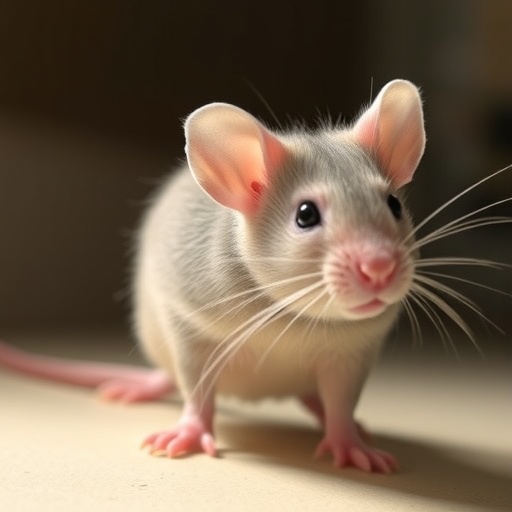In a groundbreaking longitudinal study published in Nature Neuroscience, researchers have unveiled intricate details about how adolescent brain development in monkeys predicts cognitive maturation. This research, conducted by Zhu, Garin, Qi, and colleagues, is set to redefine our understanding of the adolescent brain’s structural and functional evolution, and its consequential impact on cognitive capabilities. The study leverages advanced neuroimaging techniques, combined with rigorous longitudinal data collection, offering an unprecedented window into the neural substrates underlying cognitive growth during adolescence.
Adolescence represents a critical developmental window characterized by significant neurobiological transformations. These changes involve both the maturation of brain structure—such as gray and white matter volume adjustments—and modifications in neural activity patterns. Although previous studies have established correlations between brain development and cognitive functions, this new research takes a pivotal step forward by longitudinally tracking individual monkeys through adolescence and directly linking anatomical and functional brain metrics with burgeoning cognitive skills.
Central to the study was the use of high-resolution magnetic resonance imaging (MRI) alongside functional MRI (fMRI) to monitor both brain morphology and activity in a cohort of juvenile macaques over an extended developmental period. This approach allowed the research team to quantitatively map changes in cortical thickness, subcortical volume, and neural activity patterns associated with cognitive tasks. The longitudinal design ensured that variations were not mere cross-sectional snapshots but rather revealed dynamic developmental trajectories unique to each subject.
The researchers found that the structural maturation of prefrontal cortical regions, notably the dorsolateral prefrontal cortex (dlPFC), was tightly coupled with improvements in executive functions such as working memory, cognitive flexibility, and inhibitory control. These findings underscore the pivotal role of late-developing prefrontal regions in cognitive refinement during adolescence. Crucially, the temporal alignment between increased cortical thickness and enhanced task performance suggests that structural plasticity directly facilitates the experiential sharpening of cognitive faculties.
On a functional level, the study illuminated changes in resting-state and task-evoked neural activity patterns. Resting-state functional connectivity analyses revealed strengthening of networks linking prefrontal regions with parietal and temporal cortices. Such network integration is indicative of increasing neural efficiency and coordination, prerequisites for complex information processing. Moreover, task-evoked activity in the prefrontal cortex exhibited heightened selectivity and precision, reflecting maturation of neural coding strategies essential for nuanced decision-making and problem-solving.
One of the most compelling aspects of this study is the identification of predictive biomarkers within the adolescent brain. By assessing early neuroimaging indicators, the researchers could anticipate the degree of cognitive maturation that individual monkeys would achieve later in development. This predictive power opens exciting translational avenues, where similar metrics might eventually inform educational strategies or interventions in human adolescents, especially those at risk of neurodevelopmental disorders.
The data also shed light on the role of subcortical structures, including the striatum and hippocampus, in adolescent cognitive maturation. Increased volume and activity within these regions were associated with memory consolidation and reward-guided learning, supporting the notion that adolescence is a sensitive period for the strengthening of neural circuits governing motivational and mnemonic processes. These insights emphasize the brain’s holistic developmental choreography involving integration across multiple regions.
Intriguingly, the study pinpointed individual variability in developmental pace and outcomes, underscoring that adolescent brain maturation is not a uniform process. Some monkeys exhibited accelerated prefrontal development and correspondingly enhanced cognitive performance, whereas others followed a more protracted timeline. This heterogeneity calls for nuanced models of brain maturation that incorporate genetic, environmental, and experiential factors shaping neurodevelopmental trajectories.
From a technical standpoint, the precision of longitudinal imaging and analysis in this study was achieved through innovations in neuroimaging pipelines that correct for motion artifacts, normalize anatomical variations across sessions, and refine region-of-interest definitions. These methodological advancements ensured robustness and reproducibility of findings, setting new standards for developmental neuroscience research protocols.
Beyond the basic neuroscience implications, the findings have profound potential applications in neuropsychiatric research. Cognitive deficits related to impaired prefrontal maturation are hallmarks of numerous disorders, including schizophrenia and attention-deficit/hyperactivity disorder. By establishing normative trajectories and identifying deviations, this work paves the way for early detection and targeted therapeutic strategies during vulnerable developmental windows.
Further, the study’s integration of structural and functional data bridges a critical gap in developmental neuroscience — demonstrating how anatomy supports dynamic neural computations underlying complex cognitive operations. This integrative perspective could inspire new frameworks in neurocognitive modeling, blending physical brain changes with emergent computational properties across developmental stages.
The ethical implications of this research are also noteworthy. By elucidating normative brain development patterns without invasive procedures, it strikes a balance between scientific rigor and animal welfare. The nocturnal and social housing environments maintained during the study ensured minimal stress, further validating the naturalistic relevance of the findings.
In sum, Zhu and colleagues have crafted an exquisite longitudinal narrative of adolescent brain development that combines rigorous methodology, deep biological insight, and clinical relevance. Their pioneering work transcends simple correlation, providing causal inferences about how structural and functional brain maturation tangibly influences cognitive outcomes. This paradigm-shifting research marks a significant milestone in unraveling the complexities of brain-behavior relationships during one of the most formative life stages.
Looking ahead, future research is poised to expand on these foundations by incorporating molecular and genetic analyses alongside neuroimaging, thereby dissecting the cellular mechanisms instrumental in adolescent neural plasticity. Such multidisciplinary integration could illuminate how internal biological programs and external environmental stimuli converge to sculpt the adolescent brain.
Moreover, extending similar longitudinal paradigms to human populations, particularly with complementary behavioral and psychological assessments, could validate the translational potential of these primate findings. This endeavor promises to inform personalized education and mental health interventions tailored to individual developmental trajectories, ultimately fostering optimal cognitive outcomes across diverse populations.
In conclusion, this landmark study not only enriches our understanding of the adolescent brain’s structural and functional metamorphosis but also heralds a new era of predictive neuroscience with far-reaching implications for health, education, and society. The confluence of advanced neuroimaging, longitudinal designs, and rigorous analytics exemplifies the power of modern neuroscience to decode the intricate dance of brain and cognition through the adolescent years.
Subject of Research: Adolescent brain development and its prediction of cognitive maturation in monkeys through longitudinal structural and functional neuroimaging.
Article Title: Longitudinal measures of monkey brain structure and activity through adolescence predict cognitive maturation.
Article References:
Zhu, J., Garin, C.M., Qi, XL. et al. Longitudinal measures of monkey brain structure and activity through adolescence predict cognitive maturation. Nat Neurosci (2025). https://doi.org/10.1038/s41593-025-02076-0
Image Credits: AI Generated
Tags: adolescent brain developmentanatomical and functional brain metricsbrain morphology and activity mappingbrain structure and functioncognitive maturation in monkeyscognitive skills growth in juvenile macaquesgray and white matter changeslongitudinal neuroimaging studyMRI and fMRI techniquesneural activity patterns in adolescenceneurobiological transformations during adolescenceunderstanding adolescent cognitive capabilities




